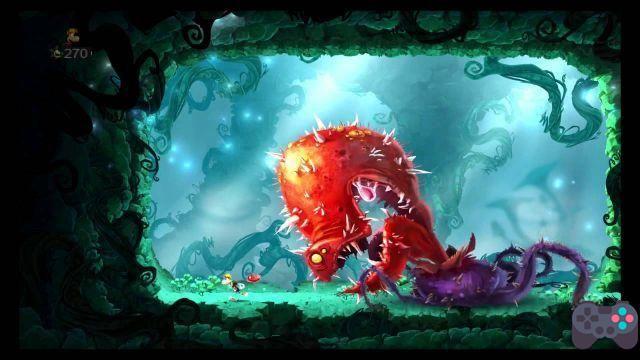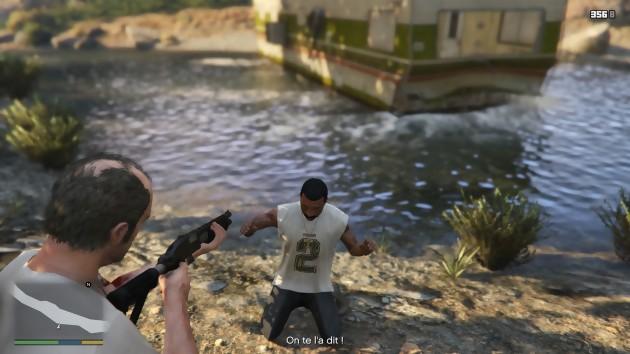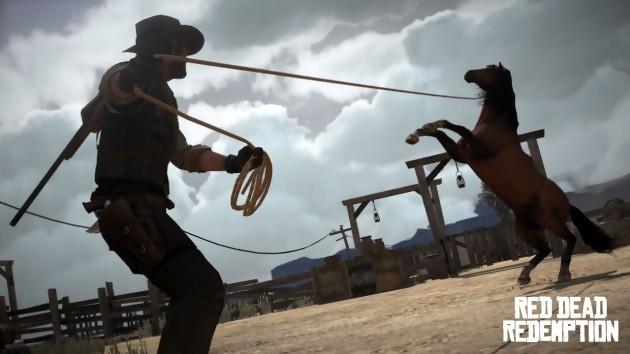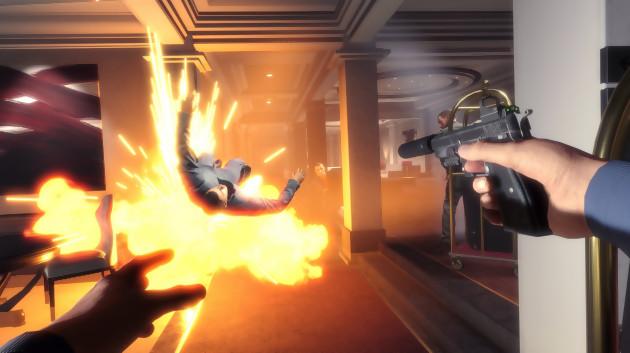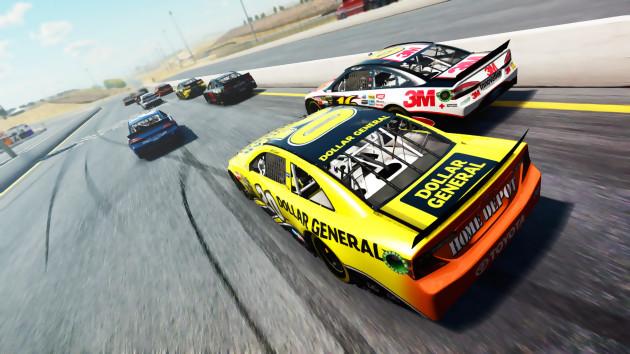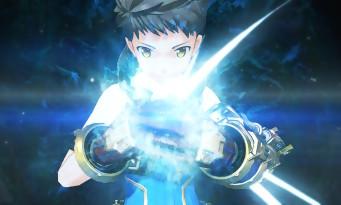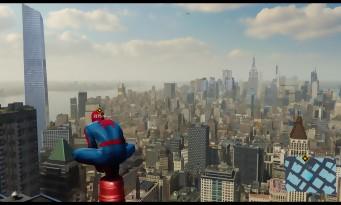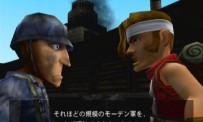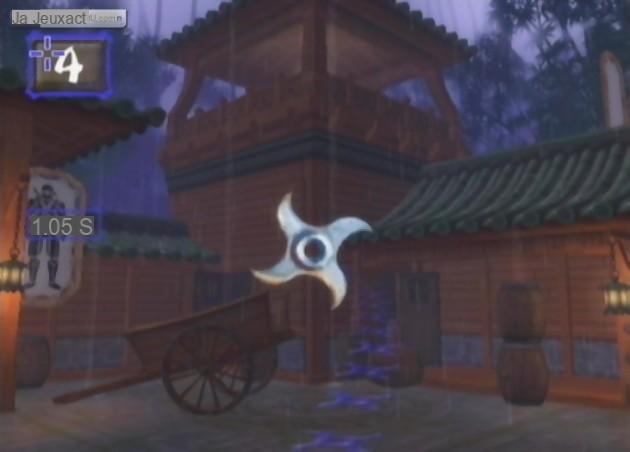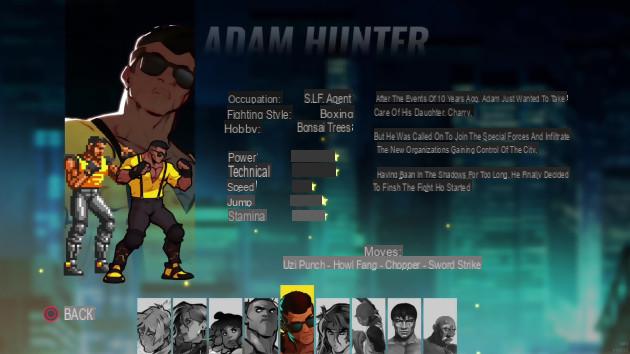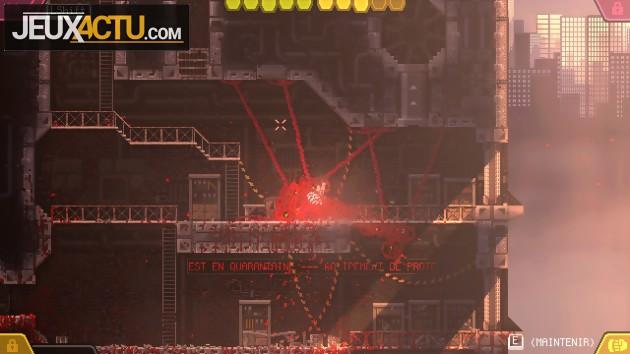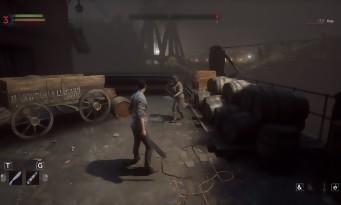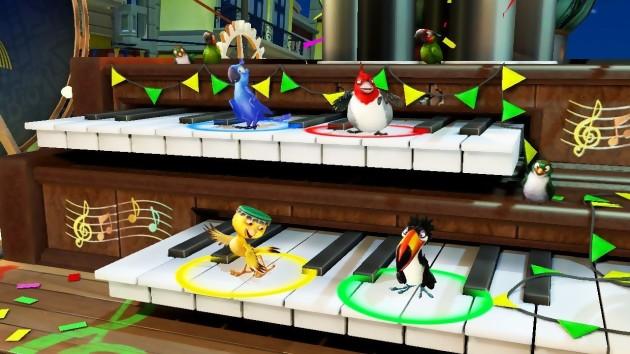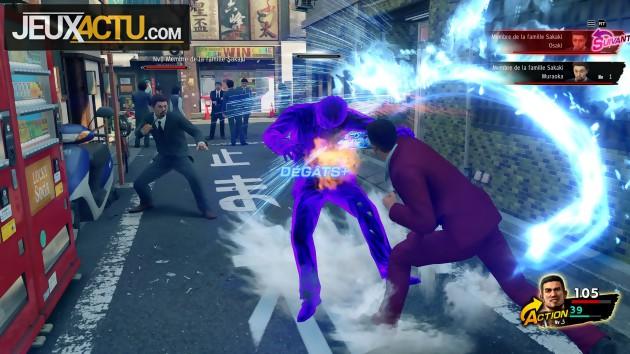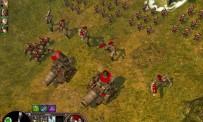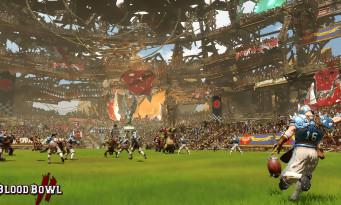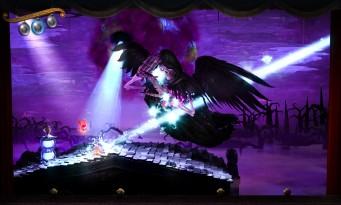 Welcome to the moon then. In the Puppeteer story however, don't expect to find craters and or an American flag. The Moon is a Kingdom whose sovereign was brought down by the usurper King-Bear, who broke the Moon Stone in the process and distributed the shards to his generals, in order to endow them with exceptional powers. Every night, he raids Earth to kidnap children and lock their souls into puppets that will serve as his little hands. This is the case of Kutaro. Problem: the latter nagged the despot so much that he decided to eat his calabash. Yes, like that for fun. And yet it is him that the Witch of the Moon, Ezma Potts, forced to take care of the kitchen of the Bear King, has chosen to send to the Black Castle to steal Calibrus, a pair of magic scissors capable of giving him advantage over the naughty teddy bear. This is where Kutaro's adventure across the Moon begins, until the despot's obvious defeat. The least we can say is that Sony Japan's game has a world of its own, halfway between the childish dark of a Tim Burton (the city of Hallowee doesn't even hide its inspiration from that of Halloween in The Nightmare Before Christmas) and the folklore of different cultures. Obviously, Puppeteer clearly bears the mark of his country of origin. Kutaro's adventure is indeed told in the manner of a bunraku play, a form of traditional Japanese theatre. It therefore takes up all the codes. The story is divided into acts, seven in number, themselves divided into three sections each (which guarantees you a good ten hours of play at least). Within these sections, Kutaro crosses, like a Sackboy in LittleBigPlanet, a series of tables whose decoration is in perpetual renewal. But there is better, since the public reacts to what it sees on stage, to the dialogues of the characters as well as to the lines of text of the narrator. Indeed, as in Bastion, the latter tells the story of Kutaro as it unfolds, and even interacts with the protagonists of the play, always with a rather appreciable humor.
Welcome to the moon then. In the Puppeteer story however, don't expect to find craters and or an American flag. The Moon is a Kingdom whose sovereign was brought down by the usurper King-Bear, who broke the Moon Stone in the process and distributed the shards to his generals, in order to endow them with exceptional powers. Every night, he raids Earth to kidnap children and lock their souls into puppets that will serve as his little hands. This is the case of Kutaro. Problem: the latter nagged the despot so much that he decided to eat his calabash. Yes, like that for fun. And yet it is him that the Witch of the Moon, Ezma Potts, forced to take care of the kitchen of the Bear King, has chosen to send to the Black Castle to steal Calibrus, a pair of magic scissors capable of giving him advantage over the naughty teddy bear. This is where Kutaro's adventure across the Moon begins, until the despot's obvious defeat. The least we can say is that Sony Japan's game has a world of its own, halfway between the childish dark of a Tim Burton (the city of Hallowee doesn't even hide its inspiration from that of Halloween in The Nightmare Before Christmas) and the folklore of different cultures. Obviously, Puppeteer clearly bears the mark of his country of origin. Kutaro's adventure is indeed told in the manner of a bunraku play, a form of traditional Japanese theatre. It therefore takes up all the codes. The story is divided into acts, seven in number, themselves divided into three sections each (which guarantees you a good ten hours of play at least). Within these sections, Kutaro crosses, like a Sackboy in LittleBigPlanet, a series of tables whose decoration is in perpetual renewal. But there is better, since the public reacts to what it sees on stage, to the dialogues of the characters as well as to the lines of text of the narrator. Indeed, as in Bastion, the latter tells the story of Kutaro as it unfolds, and even interacts with the protagonists of the play, always with a rather appreciable humor.
"It's going to be darling!"
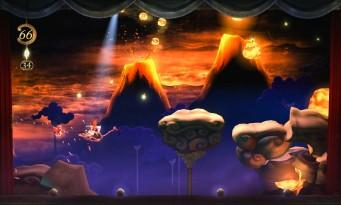 It is quite logical that Puppeteer also takes up the aesthetics of the puppet theatre, with its cardboard decorations, its characters in origami or carved wood. All this is very well rendered in the game and we welcome the choice of the developers to opt for a well-marked and worked graphic style rather than an overly realistic 3D, which would have been greedy and ultimately much less effective. It must be said that the result is frankly very nice to watch and highlights the different environments that Kutaro will go through. From the kitchens of the Bear King to the depths of the Lunar Sea, from a cemetery sheltering a depressive vampire to the deck of a pirate ship, from an arid desert with water lilies to a pool of frogs, the adventure manages to renew without ceases its background. As in Rayman Legends (whose Sony title casually shares a few characteristics), the backgrounds are still jam-packed with funky details that bring the setting to life, while maintaining the fluidity of the foreground.. And the interest of all this is not only visual.
It is quite logical that Puppeteer also takes up the aesthetics of the puppet theatre, with its cardboard decorations, its characters in origami or carved wood. All this is very well rendered in the game and we welcome the choice of the developers to opt for a well-marked and worked graphic style rather than an overly realistic 3D, which would have been greedy and ultimately much less effective. It must be said that the result is frankly very nice to watch and highlights the different environments that Kutaro will go through. From the kitchens of the Bear King to the depths of the Lunar Sea, from a cemetery sheltering a depressive vampire to the deck of a pirate ship, from an arid desert with water lilies to a pool of frogs, the adventure manages to renew without ceases its background. As in Rayman Legends (whose Sony title casually shares a few characteristics), the backgrounds are still jam-packed with funky details that bring the setting to life, while maintaining the fluidity of the foreground.. And the interest of all this is not only visual.
And as in Rayman Legends, this second protagonist, perhaps embodied by a second player, who is then responsible for activating different mechanisms, either to free the passage of Kutaro, or to recover shards of Moon Stone.
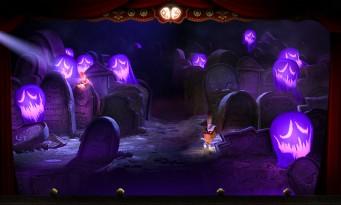 Indeed, if Puppeteer appears at first sight as a distant little brother of LittleBigPlanet, it does not take long to show its differences, joystick in hand. Let's talk about the Calibrus Scissors first, since that's probably the most recognizable feature of Puppeteer's gameplay. Once he collects it, Kutaro can cut out any fabric, paper, or canvas items in the level in order to… move around! Indeed, Calibrus plays in Puppeteer the role of the means of transport at the heart of a clever level-design which often poses the problem of having to find a trajectory of paper to progress between two ends of the platform. Finding your way, knowing how to activate the right elements is thus the main difficulty facing you. And this is also what constitutes a bit of the lack of renewal of the gameplay in the long term. If Kutaro obtains new powers as the adventure progresses, some are a little underused (like the Shield for example), and overall, a major part of the game consists of cutting to pass from one platform to another. 'other. Be careful, we are far from bored, but we would have liked to have one or two other tricks of gameplay available.
Indeed, if Puppeteer appears at first sight as a distant little brother of LittleBigPlanet, it does not take long to show its differences, joystick in hand. Let's talk about the Calibrus Scissors first, since that's probably the most recognizable feature of Puppeteer's gameplay. Once he collects it, Kutaro can cut out any fabric, paper, or canvas items in the level in order to… move around! Indeed, Calibrus plays in Puppeteer the role of the means of transport at the heart of a clever level-design which often poses the problem of having to find a trajectory of paper to progress between two ends of the platform. Finding your way, knowing how to activate the right elements is thus the main difficulty facing you. And this is also what constitutes a bit of the lack of renewal of the gameplay in the long term. If Kutaro obtains new powers as the adventure progresses, some are a little underused (like the Shield for example), and overall, a major part of the game consists of cutting to pass from one platform to another. 'other. Be careful, we are far from bored, but we would have liked to have one or two other tricks of gameplay available.
Master of puppets
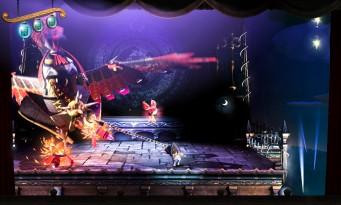 The enemies are not tougher than that and are ultimately quite few. Only the bosses offer some difficulty, even if there is some redundancy there too. Of course, all this is wanted, controlled, since the objective of the game is to be able to bring together in the same game two players of different ages and different levels (which was also the quality of Rayman Legends). The challenge is therefore not really there, but that is not the goal. With this clearly two-player perspective, the developers have added a second flying character, who accompanies our hero on his adventures; it is either the Ying-Yang cat or Princess Pikarina. And as in Rayman Legends, this second protagonist, perhaps incarnated by a second player, who is then responsible for activating different mechanisms, either to free Kutaro's passage, or to recover Moonstone shards, which will give you a life once you collect one hundred. If it happens that this mode presents a certain challenge (as in the underwater level), the second controller will be recommended for the youngest or the most inexperienced as the redundancy of possible actions and the absence of difficulty can quickly bore the more seasoned. The fault may be due to maneuverability provided for a single player, who then has to use the right stick during the action to move the flying character. It's hard to ask for more at this time... Finally, it's a shame that the game misses out on one of its main ideas: the different heads that Kutaro can recover in place of his own, still in the belly of the King-Bear. Our hero can pick them up right and left while exploring the levels of the game, and can carry three at a time. But their usefulness is limited, it is a question of "activating" them each time the decoration indicates it in order to reveal items or a bonus stage. Apart from the heroic heads, which, as explained above, offer new abilities to the puppet, all the others are only for collecting. Admittedly, this gives some replay value to the game, since you will surely have to do it again once to collect them all, but Sony missed a point that could have been essential, too bad.
The enemies are not tougher than that and are ultimately quite few. Only the bosses offer some difficulty, even if there is some redundancy there too. Of course, all this is wanted, controlled, since the objective of the game is to be able to bring together in the same game two players of different ages and different levels (which was also the quality of Rayman Legends). The challenge is therefore not really there, but that is not the goal. With this clearly two-player perspective, the developers have added a second flying character, who accompanies our hero on his adventures; it is either the Ying-Yang cat or Princess Pikarina. And as in Rayman Legends, this second protagonist, perhaps incarnated by a second player, who is then responsible for activating different mechanisms, either to free Kutaro's passage, or to recover Moonstone shards, which will give you a life once you collect one hundred. If it happens that this mode presents a certain challenge (as in the underwater level), the second controller will be recommended for the youngest or the most inexperienced as the redundancy of possible actions and the absence of difficulty can quickly bore the more seasoned. The fault may be due to maneuverability provided for a single player, who then has to use the right stick during the action to move the flying character. It's hard to ask for more at this time... Finally, it's a shame that the game misses out on one of its main ideas: the different heads that Kutaro can recover in place of his own, still in the belly of the King-Bear. Our hero can pick them up right and left while exploring the levels of the game, and can carry three at a time. But their usefulness is limited, it is a question of "activating" them each time the decoration indicates it in order to reveal items or a bonus stage. Apart from the heroic heads, which, as explained above, offer new abilities to the puppet, all the others are only for collecting. Admittedly, this gives some replay value to the game, since you will surely have to do it again once to collect them all, but Sony missed a point that could have been essential, too bad.




